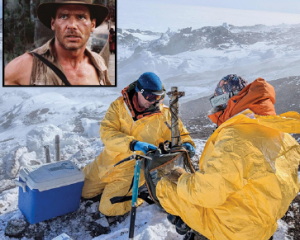Up to eight patients could have been exposed to unsterilised equipment during operations at facilities run by three of the country's district health boards, including the SDHB.
Southern and Canterbury District Health Boards have confirmed two patients at each of its hospitals were exposed, while Waikato DHB said four patients were possibly exposed.
Of the country's 20 DHBs, 13 reported incidents, including Hawke's Bay, but in most cases the problems were identified before the tools were used, Newshub reported today.
Two weeks after being contacted, Waikato DHB failed to get back to Newshub. It then reported eight incidents related to sterilisation.
Four of those appear to have exposed patients to unsterilised equipment and in other cases delayed operations that were under way.
Tissue from a previous operation was discovered inside a drill after a surgeon at Waikato Hospital noticed a stiffness when attempting to drill into the bone.
Other cases found dried blood and bone residue stuck on equipment.
At Southern DHB, old congealed blood was discovered inside a surgical screwdriver that was used during an operation, Newshub reported, while equipment was exposed to air when it should not have been because it was incorrectly put together in the second incident.
Southern DHB chief medical officer Nigel Miller said the blood would have been sterilised but it was still not good enough.
"It doesn't seem right, I wouldn't like that to happen. It's an uncomfortable thought.
"The process of cleaning, the decontamination - that wasn't done to the highest possible standard."
However, none of the patients were informed by the DHB as it was decided they weren't at risk.
"On both occasions we got a detailed risk analysis from the people with the most experience in infectious diseases, and we decided there wasn't any risk to the patients and therefore we didn't inform them," Miller said.
At Canterbury DHB in February, two unsterilised surgical telescopes were used on two patients during operations after an old sterilising machine malfunctioned and didn't complete its cycle.
Chief medical officer Sue Nightingale told Newshub they had introduced a new step in the sterilisation procedure.
"We've had a system in place since our last sterilisation incident in 2006 to ensure we can't have incidents that get through the system without being sterilised.
"At the end of the cycle there is a printout that tells you if the cycle's successful or not. It did say the cycle was not successful, it failed, but that got missed and the instruments got sent along to theatre. Unfortunately in theatre that wasn't picked up straight away."
Nightingale said patients were told when they discovered the mistake later that day. A reassurance was then made the patients were not harmed.
A serious event investigation was still under way, she said.
Extra steps have also been taken to stop any future events and the DHB has since introduced a third check on the instruments by someone not involved in their sterilisation.
In February, more than 50 patients at Hawke's Bay Hospital were exposed to inadequately sterilised surgical tools. Fifty-five patients - including three children aged under 16 - were tested for blood borne viruses such as HIV and Hepatitis B and C. None showed any sign of infection.













